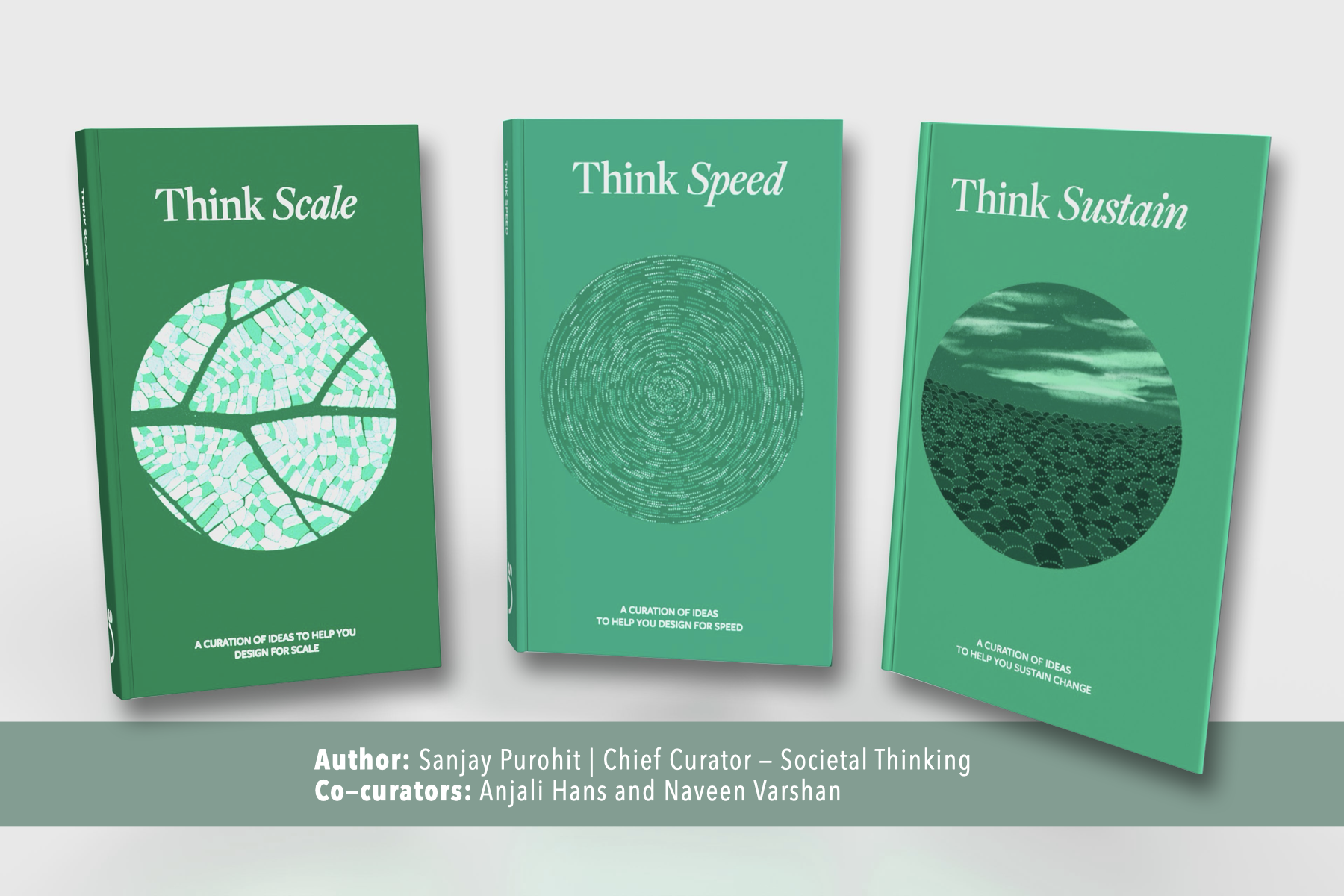I moved from Delhi to Bangalore in 2021. While Bangalore doesn’t have Delhi’s sweltering summer and bitter winter, it has poor Metro connectivity, snaking traffic and auto-rickshaw crunches that are meme-worthy! Urban India is projected to contribute more than 70% of India’s GDP and house at least 40% of the national population, and I wonder what it would take to make cities spaces where people from all walks of life can easily come together, interact and collaborate.
Currently, the landscape of urbanisation is dotted with issues around inadequate capacity, coordination, planning and execution and fragmented responsibilities. Government officials work tirelessly to deliver economic opportunities, services and infrastructure, but it’s difficult for them to keep pace with the unprecedented growth, so citizens still face barriers in accessing services and doing business. What’s needed to tap into the economic, social and cultural potential of cities is restoring the agency of city stakeholders to do more, better and in coordination.
Developed by the Ministry of Housing and Urban Affairs (MoHUA), the National Urban Innovation Stack (NUIS) is a Societal Frame, looking at the challenge from a Societal Thinking lens. The NUIS is a nationally shared digital public infrastructure that includes an Urban Connect Platform for intuitive collaboration, a National Urban Learning Platform fostering widespread capacity-building, and a Research and Innovation Platform driving essential research on urban challenges. The open-source Urban Data Exchange facilitates seamless data sharing, while the Citizen-Centric Smart Governance Platform streamlines e-government solutions and online service delivery. NUIS fosters transparency and collaboration across governments, industries, and citizens, to drive innovation that addresses critical urban.
I delved deep into the journey of NUIS – from how it was first conceptualised to where NUIS is now – with Gautham Ravichander, at eGov Foundation. Here are snippets from our conversation that delve into the genesis of the National Urban Innovation Stack (NUIS), exploring the need to shift perceptions of urban areas, the birth of the DIGIT platform, and the challenges in building trust around technology for urban transformation.
How was the initial trigger for NUIS? What was the problem you were trying to solve?
Citizens tend to think of the government as a slow, uncooperative entity. In the change space, however, leaders really want to work with the government and even the private sector to achieve impact@scale. Popular perception is that most people in India live in rural areas. (While ‘urban’ is narrowly defined in the Census, alternative definitions suggest that a whopping 63% of India is urban.) This takes away from us viewing and treating urban areas as critical to India’s development story, even though they generate 70% of India’s wealth and drive the GDP. Urban areas are underserved and need more investment in infrastructure and services. This lens would get mired in the political economies of voting between urban and rural areas. We needed to flip the lens. This led us to the question: How can people love living in cities? When we phrased it like this, we began thinking about a national platform. A platform isn’t only about technology but about people across social, economic and cultural contexts coming together, be it to take collective action or to carry out transactions. I think of cities as platforms too, housing people across many backgrounds and aspirations. Think of it as poets meeting bankers meeting technologists – co-creating, co-innovating and leading to economic, social and cultural output.
The question we were asking was how do we build software that would make cities work better for citizens as well as administrators. Over the last 30 years, we’ve seen the slow adoption of technology in the government. However, the government hasn’t been able to use technology to streamline operations as effectively as the private sector. We started thinking about a digital platform to break silos within the government and open up engagement between different levels and then, making this platform available across society. This is how DIGIT was born. It’s for the citizens as well as the government and designed in a way that more and more players come onboard with time.
Our reimagination was a city where people can communicate easily with one another and take action, supported by collective discovery and collective wisdom. For instance, some communities, such as unions, are very active. Can they be the bridge between people and the government to relay people’s needs to the government and ensure the government can communicate well with the people? This way, human networks will be complemented by a digital platform so that cities can see, sense and serve the needs of citizens instead of being unwieldy beasts we have to constantly negotiate with, for ease of living.
How did you build trust around leveraging technology to reimagine cities?
We relied on storytelling to shift the focus from building software to making cities function effectively for everyone by leveraging technology. For example, small businesses or landowners may need a range of licences and permissions; if you want to build a bakery or a restaurant, you might need approval for building plans – which have to follow specific building codes – as well as safety certificates from the fire department, food safety department, etc. You would also need a trade licence. All of these can be time-consuming, with each needing its own specific inputs and documents, and following its own processes. How might the entire experience be made easier for this MSME? Our intent was to bring people together to solve challenges like these, not to talk about software. We wanted to stand for improvement in the quality of life of citizens by making service delivery efficient. For this, it was integral that the government be seen as a partner towards making this happen. We started talking to think tanks and civil society organisations such as Janaagraha and IIHS and shared how platforms could change governance by enabling people to solve problems and be time- and resource-efficient. Simultaneously, we realised that we needed to step away from our computer screens and spend time on the ground. We went city to city, talking to citizens, administrators and government officials. We spoke to many different people and tried to figure out the ways in which they were using technology. This not only reignited the flame within our team to do what we do, but also helped us understand our users better.
At the same time, Andhra Pradesh won an award at the national level and marked a big shift in the narrative – from ‘Look how technology can solve problems’ to ‘This is how we can serve citizens better, leveraging technology’.
In a large country with diverse needs, varying governing capabilities and structures, how do you scale to solve for all these different contexts?
What’s needed for urban governance varies greatly depending on administrative and legal structures, as well as cultural context. In Bangalore, we wouldn’t be too interested in the traffic problems Delhi faces because it doesn’t affect our commute. The need to see, sense and solve is local, and it can happen when all tiers of the government work together. In practice, however, this still isn’t very efficient. Citizens often want authorities to do the bare minimum and stay out of their way. How can we, then, reimagine cities as hubs of innovation, so that the government builds cities to attract people, investment and that are liveable? Despite our narrative being anchored around leveraging technology to service citizens better, one of the pushbacks we keep facing is “Oh, you have a software. How does that change anything?”
We’ve realised it takes ongoing effort to build trust around technology and how it can, when designed keeping in mind diverse users, change how people interact. It also asks us to simplify even more. A person working in finance doesn’t care about protocols, for a person coordinating the workforce on the ground to ensure cities are clean, the last thing they care about is a technology solution that sounds cool on paper. What people would take notice of is technology that can help raise a complaint, have them be acknowledged and responded to without standing in a queue for hours. Every time we brought the focus back on users, it became easy to rally actors behind our mission. For example, be it the Water Department, Electricity Department or Traffic Police, they all need to collect charges and fines. What if there could be a single payment application for that? All departments need to deal with complaints – could there be a common framework to deal with grievance redressal? These kinds of common services can help departments coordinate better and start the flywheel of better governance turning.
At the same time, we were thinking through the policy environment in India and wondering what policy levers would be needed for DIGIT to work at scale and support all cities in the country. We had reached 350-odd cities in our traditional mode of engagement and knew this approach wasn’t going to be viable if we needed to reach population scale. Frankly, we needed to stop being the bottleneck to the potential of the platform.
In a federal system like ours, this is an interesting conundrum to solve. The local governments who needed DIGIT the most lacked the capacity to adopt and deploy it to solve their problems. By this I don’t mean the top 100 cities in the country, which by virtue of their size and importance, it received capital, staffing and attention from governments and markets to make them function well, but the remaining 4,600+ cities that needed help the most. Andhra Pradesh had taught us that when the state governments stepped in and provided the platform in a shared services model, all cities could benefit regardless of their size. The national government was also a significant influencer that provided policy guidelines, funding support and technical assistance to states and cities to improve their governance. We needed to find a model that would align the national and state governments to support the transformation of city governments using DIGIT. Our policy initiatives focused on finding this model and creating the momentum and buy-in to bring it alive.
Even so, we knew that the technical expertise and support needed for 4,600+ cities could not be provided by eGov alone. This is why we started working closely with India’s technology and government consulting ecosystem to build their capabilities to implement and support DIGIT so that governments could procure these skills from the market.
In learning about the story behind NUIS, I recognise how they have had to shift the lens when I think about urban development to realise urban areas are critical hubs of economic, social, and cultural activity, deserving of innovative solutions for enhanced liveability. My conversation with Gautham Ravichander continues in Part 2 where we delve deeper into the milestones, serendipitous moments, and the impactful outcomes of NUIS as it continues to shape the urban landscape. Stay tuned!
Read how other change leaders have sparked the collective reimagination of actors across civil society, government and markets – National Mentoring Mission and National Digital Education Architecture.
 Back
Back


